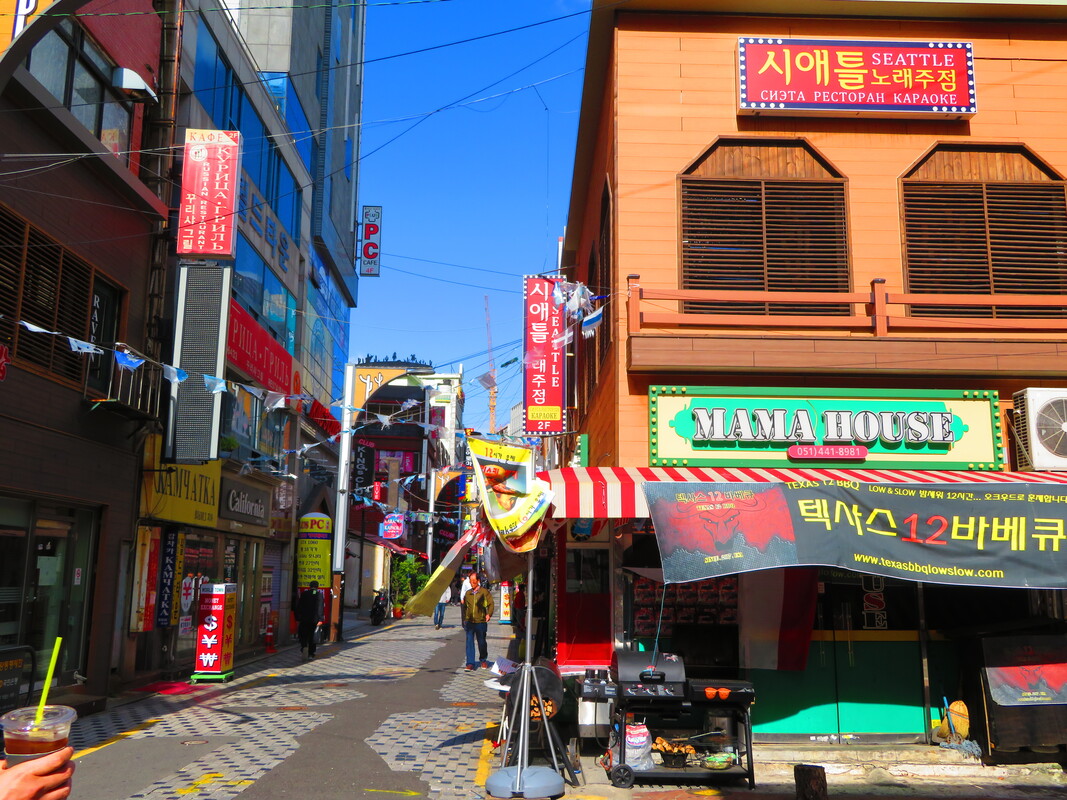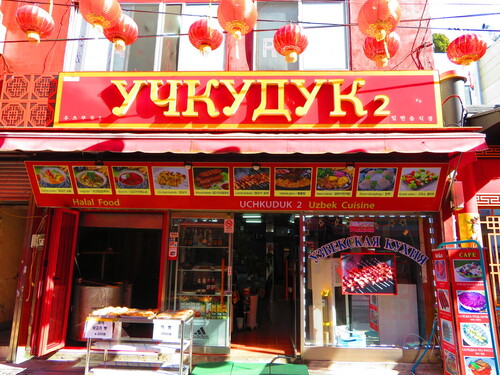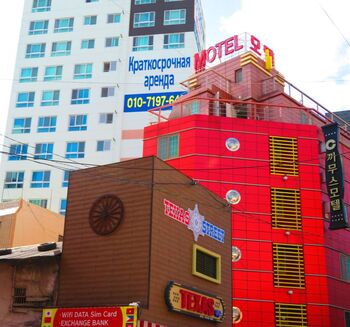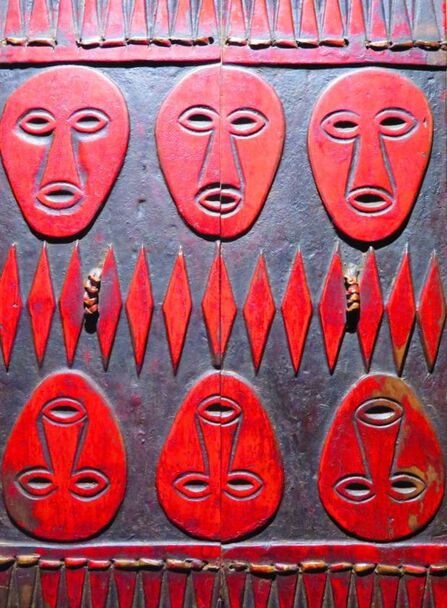overwhelming amount of the businesses were Russian -- markets with Russian advertisements, Russian cafes, Russian restaurants, even Russian karaoke! It felt as if I wasn’t even in Busan anymore. I was strolling along in a little piece of Russia.
I hear their joyful chatter, and then turn to my friend, Lily, who is ethnically Moldovan, and Russian is her home-language. I stare at her with eyes bulging in shock. “Do you hear that?” I ask. Lily squints her eyes and shifts a little to listen in on the conversation behind us. “They’re Russian,” she announces with a high-pitched voice of gleeful surprise. “I thought so! But that one girl looks Korean,” I whispered. “There are a lot of Asian ethnic groups in Russia,” Lenny explained. And although I knew that to be true, it still fascinated me. I was curious to know how many lived here. And why Korea. A Brief History of Koryo-Saram The ethnically Korean-Russian population are known as Koryo-Saram which literally means Korean person. Koryo is a title referring to the ancient dynasty of the Korean peninsula, and saram translates to ‘people’ in the Korean language. The start of the Korean migration to Russia dates all the way back to the late 19th century, about 150 years ago. In the 1860s, due to a political system that valued the royal and wealthy, many poor farmers were forced to cross the borders into Russia to harvest more fertile land; however, it was dangerous crossing between the countries. In 1869, approximately 10,000 Korean nationals settled across the border in the far east region of Russia. At that time, ethnic-Koreans constituted 20% of the population of the Primorsky Krai. The population grew exponentially moving into the 20th century, a growth that was due to a shift in political power on the Korean peninsula. "...the tension between Russia and Japan impeded them from settling in Russia for too long." In 1910, Japan invaded and occupied Korea. At the pressure of war, and the devastation of their livelihood, the eastern region of Russia saw an influx of Korean immigrants. Four years after the Japanese invasion, the population of ethnic Koreans in Russia was an estimated 64,309. Not long after the formation of the Soviet Union, there was a reported population of 106,817 in 1923 -- an increase of over 40,000 people in less than ten years. But although they went seeking refuge and attempted to rebuild their lives outside of the Japanese powers, the tension between Russia and Japan impeded them from settling in Russia for too long. In 1937, at the hint that Japan infiltrated Russia with Korean spies, Stalin signed off on the order to exile Korean people from Russia. In October of that year, over 170,000 people -- Korean nationals, Russian-born Koreans, and even those of mixed ethnicities -- were forced to relocate to central Asia. During this time, regions such as Uzbekistan, Kazakhstan, and Turkmenistan, were states of the USSR, and became the grounds of a new life for the deported Koreans; however, the conditions of the move and of the land they were given were unlivable. The country was foreign, and the agriculture was strange. Thousands, including many children, died in transport to various Soviet states. But that didn’t stop the survivors from forging on to make life with their bare hands.
perspectives, as well. One student said she cried every day in her first year and wants to return to Uzbekistan because everything in South Korea is so foreign to her. Her mother explained they lived in Russia and Uzbekistan, and now Korea -- they are experiencing a bit of an identity crisis. The other student said in his heart he knows he’s Korean. When he came here, he was so happy to be in a place where everyone looked like him, but it’s been troubling to get everyone else to accept him the same way. Because he is a fourth-generation Koryo-Saram, he is legally a foreigner. He is not recognized as Korean. Classmates tease him about being foreign, and he has a tough time fitting in. For both of these students, they must return to Uzbekistan one day because they can only reside in Korea with a visa. When it expires, they’ll have to make a decision -- stay in their motherland or return home. The challenge for children of any diasporic community. From the decision to move into Russia to escape colonial invasion to their forced removal and displacement in Central Asia, the Korean diaspora has endured for over one-hundred years. It’s a generational narrative of refuge, strength, and identity. Now, when I take a walk through Texas Street I’m reminded of that history. All information for this article was gathered through the resources and interviews from Arirang News, KoreaExposé, and KBS World Radio. *Names changed for privacy and confidentiality
1 Comment
When we think of Taiwan, we think of a country with heavy Han-Chinese influences. Their official standard language is Chinese; their food has Chinese flavors; most of the population is ethnically Chinese. But Taiwan is not China, so who were the people living on the island before the presence of the Han Chinese ethnic group? All images included in this article are photographs taken by the author at the Shung Ye Museum of Formosan Aborigines.
islands from the coast of Africa to the coast of South America, it’s truly a wonder why the globe hasn’t been exposed to the fascinating history of Taiwan.
if I did not acknowledge their strife, as well. Due to slower economic development in the tribes, youth are forced to move into the city and adapt to more an urban life which takes them away from their native culture and identity. Thus, this adversely affects the structure of their tribal society: Villages have a hard time maintaining their land as land that was promised to them is being bought out for urban development.
Their suffering does not stop there, but there are many generalizations of their lifestyle and stereotypes of their people which gives way to discrimination. For example, there is a commonly promoted image of indigenous peoples being alcoholics which takes away from the understanding of their hardships being marginalized in modern Taiwan society. Traditional religious beliefs have basically disappeared and been replaced by Western religions. In recent years, racial consciousness has increased, and the country has thus become more aware of the indigenous groups. In the later years of the 20th century and into the 21st century, advocacy for aboriginal rights, recognition, and reclamation have transformed the edification and awareness of these indigenous groups. I was fortunate enough to learn all of this information from my trip to the Shung Ye Museum of Formosan Aborigines in Taipei. This museum was established in 1994 to exhibit the history and artifacts of those aboriginal groups with the mission to educate the public of the cultures and societies that founded the island we now call Taiwan. |
Services |
Author |
|






